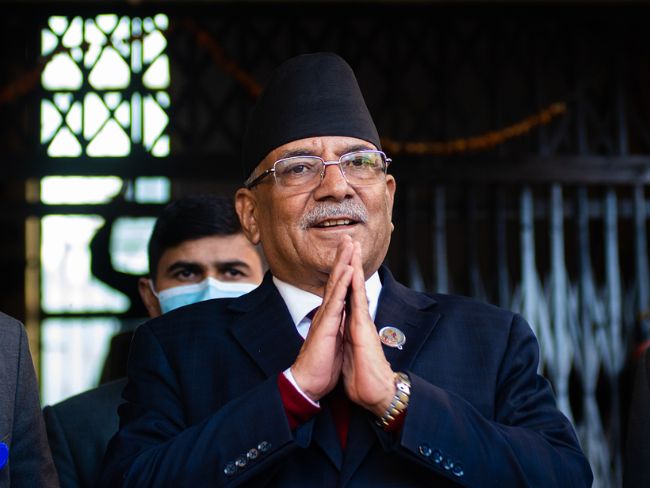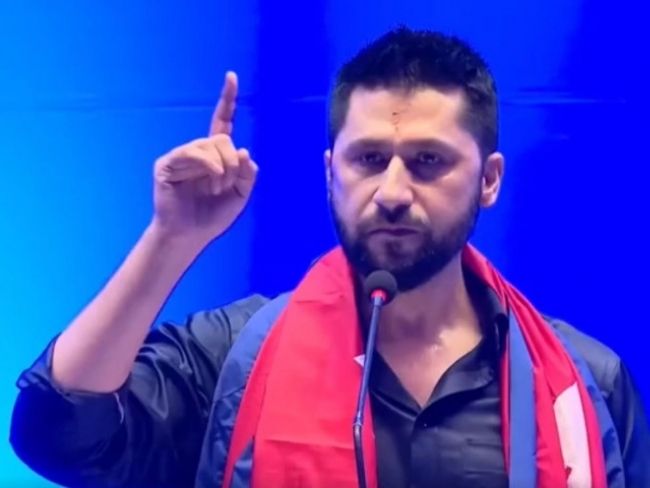On 11 December 1954, Pushpa Kamal Dahal, better known as Prachanda, was born in Kaski, Nepal. He led the Maoist rebellion (1996–2006), signed the Comprehensive Peace Accord, and played a key role in overthrowing the monarchy. After the transition, he entered mainstream politics and served three times as the Prime Minister of Nepal. He still drives coalition politics as the Chairman of the CPN (Maoist Centre), working to restore federalism and social justice. Supporters credit him with shaping the republic, while opponents blame him for making promises he never fulfilled.
Quick Facts:
- Superior Name: Pushpa Kamal Dahal (also referred to as Prachanda)
- Birth Place: 11 December 1954, Dhikur Pokhari, Kaski District, Nepal.
- Education: Diploma (Agriculture Science), Institute of Agriculture and Animal Science, Chitwan.
- Political Party: Communist Party of Nepal (Maoist Centre)
- Roles: Prime Minister of Nepal (2008,2009, 2016,2017, 2022). Chairman CPN (Maoist Centre)
- Major Position: Supreme Commander, Maoist People’s Liberation Army (1996-2006)
- Marital Status: Married to late Sita Dahal (d. 2023); he has four children.
- Areas of interest: Federalism, republicanism, social justice, and the peace process.
Early Life
Pushpa Kamal Dahal, popularly called Prachanda, was born on 11 December 1954 at Dhikur Pokhari, Kaski District. He knew what it was like to live in rural areas at a very young age, and this would make him understand the issues of social inequalities. He later transferred to Chitwan, where he studied agriculture at the Institute of Agriculture and Animal Science, Rampur. In his time as a student, he developed an interest in communist ideology, but such interest slowly propelled him into underground political activities, and this was the start of his revolutionary life.
Personal Life and Health
Prachanda, or Pushpa Kamal Dahal, is the son of a paper mill worker from Dhikur Pokhari, Kaski, and later grew up in Chitwan. He has four children and was married to Sita Dahal, who passed away in 2023. In addition, he is an agriculturalist who enjoys reading and engaging in social activism. Despite facing a few health issues due to age, he remains an active leader in the country. To cope with stress and stay politically engaged, he maintains a moderate lifestyle.
Emerge as an Innovative Leader:
By the 1980s, Prachanda was now one of the leaders of the Nepal underground communist movement. In 1996, he initiated the Maoist people’s war, which had the monarchy and parliamentary institutions as its targets. He continued to be the head of the Maoist People’s Liberation Army in the following ten years, with the focus on land reform, inclusion, and social justice. Even though the insurgency resulted in massive loss of lives, it preconditioned historical political change.
Gaining Political Entry into the Democratic Party:
Since the peace accord, Prachanda entered electoral politics:
2008: He was elected Nepal’s first Prime Minister during the republican era.
2016: Re-elected as Prime Minister again in coalition with Nepali Congress.
2022: Re-elected in a third term with political unrest.
He is also Chairman of CPN (Maoist Centre) and influences coalition governments and the national policy.

Peace Process and Transition:
Prachanda signed the Comprehensive Peace Accord in 2006, which officially brought an end to the armed conflict. He subsequently brought his party into mainstream politics, which eventually assisted in ending the 240-year monarchy and the creation of a federal democratic republic. His rule at this time earned him respect and criticism as Nepal juggled between reform and reconciliation.
Philosophy of Politics and Social Opinion:
Prachanda puts a premium on federalism, social inclusion, and republicanism. His advocates view him as a revolutionist who has brought landmark changes, whereas others believe that he is too much of a compromiser in coalition politics. His leadership approach is practical but daring that combining grassroots activism with the strategies of national governance.
Legacy and Impact:
- The Nepal Republic: The main feature of the shift to a republic in Nepal.
- Peace and Integration: Included former rebels in mainstream politics.
- Federal Democratic System: Proposed inclusion/representation of marginalised populations.
- Youth Engagement: Engaged with the younger generations in terms of policy changes and country discussions.
Controversies:
Insurgency Casualties: The 10-year-long Maoist people’s war (1996-2006) resulted in over 17000 deaths, which attracted criticism of being human rights abuses.
Political Opportunism: It is claimed by critics that he has made compromises on coalition and changed alliances to serve a political purpose.
Failure to keep Promises: There are still unfulfilled promises in regard to some social and economic reforms undertaken after the peace accord.
Intra-Party Squabbles: CPN (Maoist Centre) has had issues of faction during its tenure.
Youth Protest Management: In the 2025 Gen Z protests, his reactions were viewed as wary instead of firm.
Electoral History:
| Year | Election | Constituency | Party | Result | Votes / Notes |
| 1991 | House of Representatives | Not contested | – | – | Did not participate |
| 1994 | House of Representatives | Not contested | – | – | Did not participate |
| 1999 | House of Representatives | Not contested | – | – | Did not participate |
| 2008 | Constituent Assembly | Chitwan-3 | CPN (Maoist) | Won | Elected as Prime Minister after the monarchy was abolished |
| 2013 | Constituent Assembly | Chitwan-3 | CPN (Maoist) | Lost | Lost to Nepali Congress candidate; party underperformed nationally |
| 2017 | House of Representatives | Chitwan | CPN (Maoist Centre) | Won | Elected; part of the left alliance with CPN-UML |
| 2022 | House of Representatives / Prime Minister | Nationwide coalition | CPN (Maoist Centre) | Won | Elected as Prime Minister through a coalition, not a direct constituency win |
Role During GenZ Protests (2025)
Prachanda became politically active during the 2025 Gen Z protests in Nepal, which erupted after the government banned social media and fueled young people’s disillusionment with corruption, unemployment, and inequality. He met young people in parliament, sponsored reforms to fix governance failures, and demanded open policies to meet the people’s demands. Although the demonstrations challenged the government, his role in it showed how he balanced past and present political crises and proved him to be one of the nation’s most significant leaders.
Conclusion:
To conclude, Prachanda, or Pushpa Kamal Dahal, headed the Maoist insurgency in Nepal, removed the monarchy, and created a federal democratic republic. Additionally, he incorporated ex-rebels in mainstream politics, encouraged inclusion of the marginalised groups and involved the youth in national reformations. Still, even if the insurgency casualties, political compromises, and unfulfilled promises have been controversial, he still makes an impact on the politics of Nepal by addressing issues such as the 2025 Gen Z protests. All in all, the Prachanda leadership style exhibits vision, perseverance and the skill to overcome political transitions of the past and the present.
You May Also Like:





Comments are closed